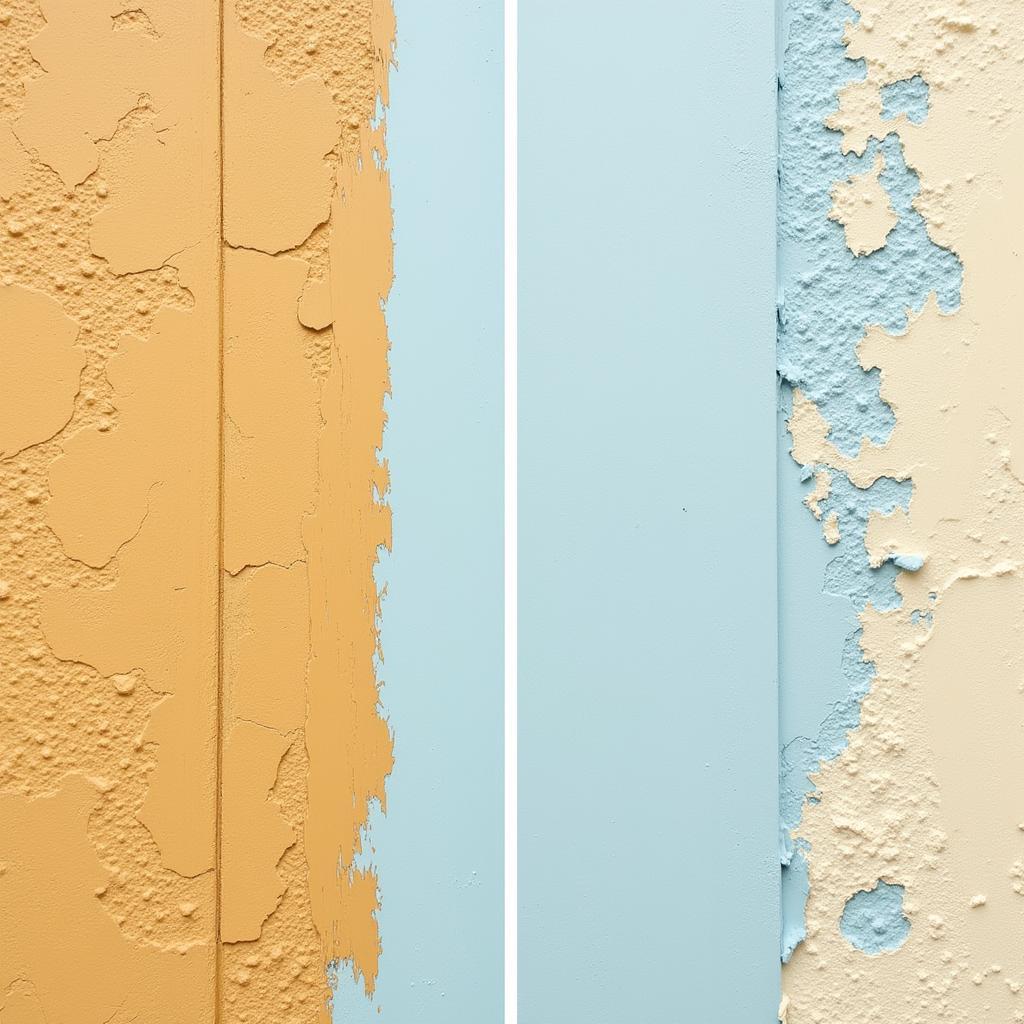Paint, the seemingly unchanging protector and decorator of our homes, can subtly shift its hues over time. Various factors contribute to this gradual transformation, affecting the vibrancy and overall appearance of your carefully chosen color scheme. Understanding these factors can help you make informed decisions about paint selection and maintenance, preserving the beauty of your space for years to come.
Factors Affecting Paint Color Change
Several factors can influence how paint color changes over time. These include the type of paint used, environmental conditions, and the quality of the initial application. Let’s delve deeper into each of these aspects.
The Type of Paint Matters
Different types of paint react differently to environmental factors. Oil-based paints, for instance, tend to yellow over time, especially in areas with limited exposure to sunlight. Acrylic latex paints, a popular choice for interior walls, are more resistant to yellowing but can fade due to prolonged exposure to UV rays. does paint color change over time explores this topic in more detail.
Environmental Impact on Paint
Sunlight is a major culprit in paint color change. The UV rays can break down the chemical bonds in the paint pigments, leading to fading, especially with vibrant colors. Humidity and temperature fluctuations also play a role, causing the paint film to expand and contract, potentially leading to cracking and peeling, which exposes the underlying layers and creates a noticeable color difference.
Quality of Application and Preparation
Proper surface preparation and application techniques are crucial for long-lasting paint color. A poorly prepared surface can lead to uneven paint absorption and premature fading. Similarly, applying thin coats or failing to properly prime the surface can compromise the paint’s durability and colorfastness. Understanding what color is blanc can also be relevant when choosing a base or undercoat.
 Impact of paint application quality on color longevity
Impact of paint application quality on color longevity
How to Minimize Paint Color Change
While some color change is inevitable, you can take steps to minimize it and maintain the vibrancy of your painted surfaces.
Choose High-Quality Paint
Investing in high-quality paint formulated with UV-resistant pigments is essential. These paints are designed to withstand the damaging effects of sunlight and other environmental factors, ensuring longer-lasting color.
Proper Surface Preparation
Thorough surface preparation is key to a successful paint job. Cleaning the surface, filling any cracks or holes, and applying a primer create a smooth and uniform base for the paint, promoting even color and improved durability. Consider the philosophical question of do you love the color of the sky as you consider the vastness of color choices available.
Regular Cleaning and Maintenance
Regularly cleaning your painted surfaces can help remove dirt and grime that can contribute to fading and discoloration. Use a mild detergent and water solution, and avoid harsh chemicals that can damage the paint film. This is particularly important for exterior surfaces exposed to the elements. This principle also applies when pondering is banana a color, as understanding color nuances aids in cleaning choices.
Common Questions About Paint Color Change
Why does my white paint look yellow?
White paint, especially oil-based varieties, can yellow over time due to oxidation and limited exposure to sunlight.
How can I prevent my paint from fading?
Using high-quality paint with UV-resistant pigments, proper surface preparation, and regular cleaning can help prevent fading.
Does the direction of the wall affect color change?
Yes, south-facing walls receive more direct sunlight and are therefore more susceptible to fading.
Conclusion
Does paint change color over time? Yes, it’s a natural process influenced by various factors. By understanding these factors and taking proactive steps to minimize their impact, you can preserve the beauty and vibrancy of your painted surfaces for years to come. Choosing the right paint, preparing the surface correctly, and implementing regular maintenance are crucial for maintaining the desired color and ensuring a long-lasting finish. Explore the depths of your personal preferences by considering what color is your soul as you create your ideal space.
FAQ
- What type of paint is most resistant to fading? Acrylic latex paints with UV-resistant pigments are generally more resistant to fading.
- How often should I clean my painted walls? Cleaning your painted walls every few months or as needed can help prevent discoloration.
- Can I repaint over faded paint? Yes, you can repaint over faded paint, but proper surface preparation is crucial for optimal results.
- Does temperature affect paint color? Extreme temperatures can cause the paint film to expand and contract, potentially leading to cracking and color changes.
- How can I tell if my paint is fading? Compare the paint in a less exposed area (like behind a picture frame) to a more exposed area to detect fading.
- What is the best way to prevent paint yellowing? Using water-based paints and ensuring adequate ventilation can help prevent yellowing.
- Can I restore faded paint? In some cases, faded paint can be restored with specialized cleaning products or by applying a fresh coat of paint.
Need assistance with your painting project? Contact us at 0373298888, email us at [email protected], or visit our showroom at 86 Cầu Giấy, Hà Nội. We have a 24/7 customer service team ready to assist you.
